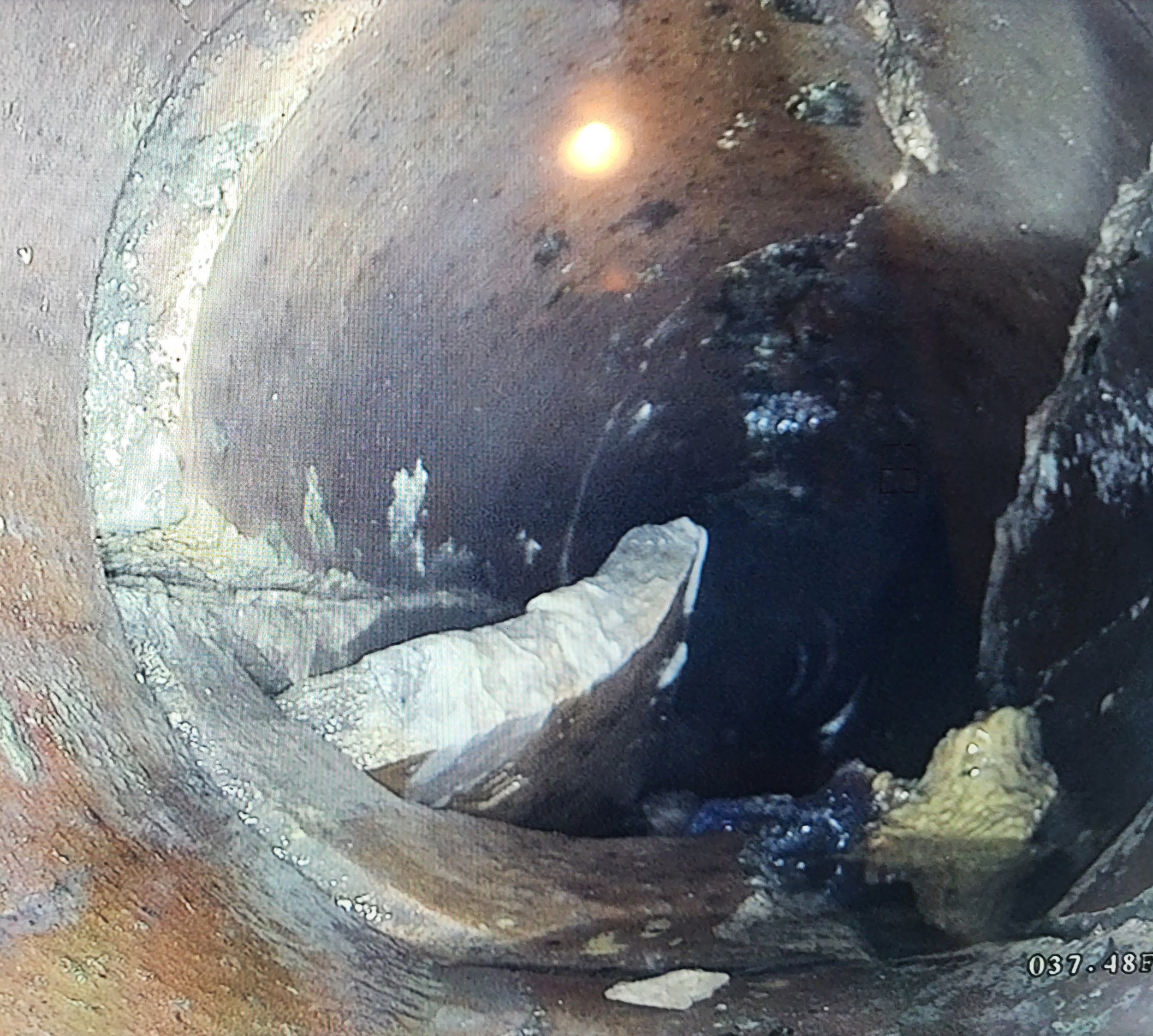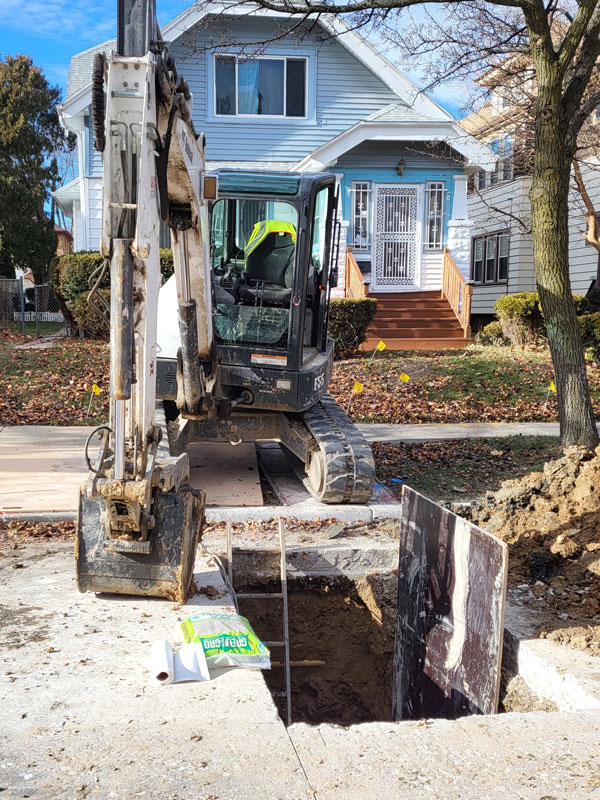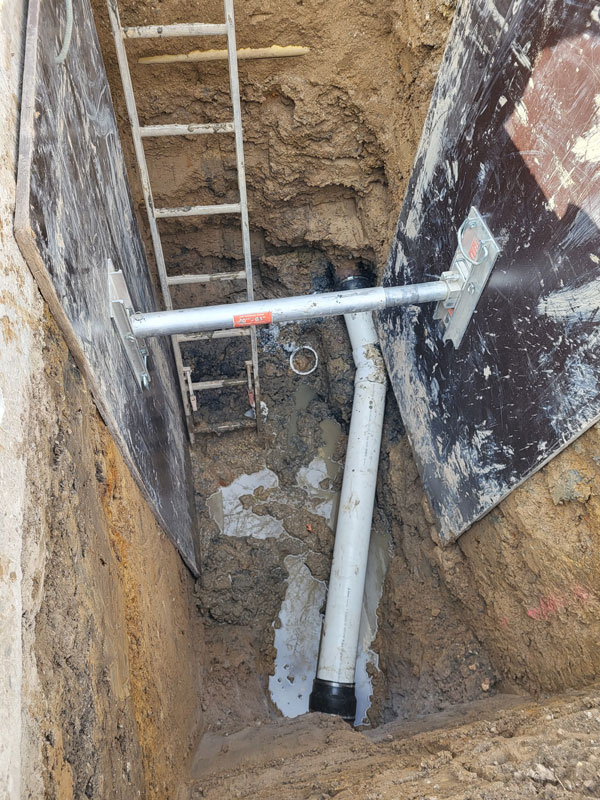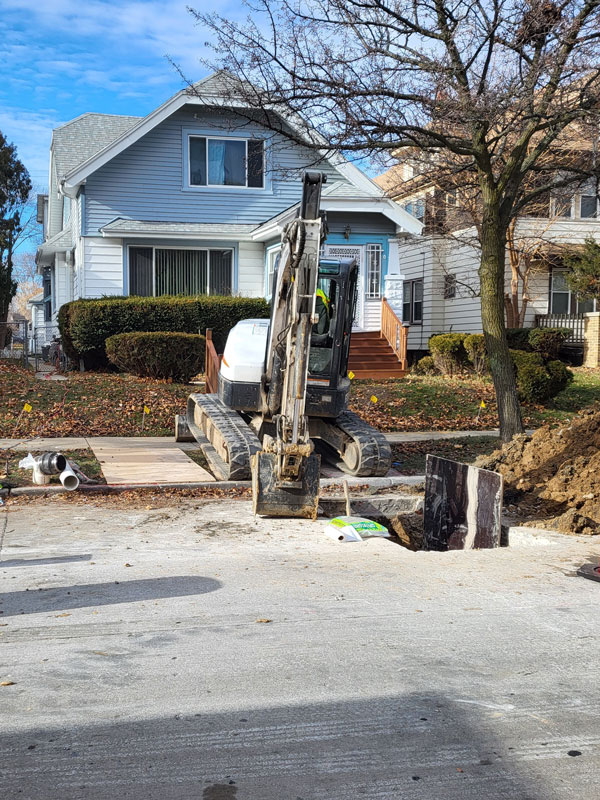Pipe Bursting
Pipe bursting is a trenchless method of replacing underground pipelines without the need for extensive excavation. It is widely used in sewer, water, and gas line replacement projects, offering an efficient, cost-effective, and environmentally friendly alternative to traditional open-cut methods.
How Pipe Bursting Works
Pipe bursting involves breaking and displacing the existing pipe while simultaneously pulling in a new one. The process begins with the insertion of a bursting head into the existing pipe. This specialized tool is attached to a pulling rod or cable, which is guided through the pipe to a receiving pit. As the bursting head is pulled through the pipeline, it fractures the old pipe and pushes the fragments outward into the surrounding soil. Behind the bursting head, a new high-density polyethylene (HDPE), PVC, or ductile iron pipe is pulled into place, seamlessly replacing the old infrastructure.
We offer same-day camera inspection and next-day sewer lateral repair!

Advantages of Pipe Bursting
- Minimal Surface Disruption: Since pipe bursting is a trenchless technique, it eliminates the need for extensive digging, reducing traffic disruption, property damage, and restoration costs.
- Increased Pipe Capacity: The new pipe can often be of the same size or slightly larger than the old one, improving flow capacity.
- Durability: HDPE and other replacement materials used in pipe bursting are resistant to corrosion, root intrusion, and leaks.
- Cost-Effective: Although the initial investment may be high, reduced labor, restoration, and maintenance costs make it more economical in the long run.
- Environmentally Friendly: Pipe bursting minimizes soil disturbance, preserves natural habitats, and reduces the carbon footprint compared to traditional excavation methods.
Pipe bursting is a proven trenchless technology that offers a practical and sustainable solution for pipeline replacement. With its ability to minimize surface disruption, enhance infrastructure longevity, and reduce overall costs, it is increasingly becoming the preferred method for municipalities and contractors seeking efficient pipe replacement solutions.
What our clients are saying.
What could have caused my sewer lateral to fail?
Sewer lateral failures can occur for various reasons, and diagnosing the exact cause often requires a professional inspection. Some common causes of sewer lateral failures include:
Age and Wear:
Sewer pipes have a finite lifespan, and over time, they can deteriorate due to wear and tear. Older pipes made of materials like clay or cast iron are more susceptible to this kind of degradation.
Tree Root Intrusion:
Tree roots seek out sources of water, and they can penetrate sewer pipes through small cracks or joints. As they grow, they can block or damage the sewer line.
Corrosion:
Depending on the material used for your sewer lateral, corrosion can occur over time. Corroded pipes can weaken and develop leaks or cracks.
Poor Installation:
If the sewer lateral was not installed correctly in the first place, it can be more prone to issues such as misalignment, offset joints, or improper slope.
Soil Shifting:
Changes in soil conditions, such as settling or shifting, can put pressure on sewer pipes, causing them to crack or break.
Blockages:
Accumulation of debris, grease, or foreign objects in the sewer line can lead to blockages and backups, which can put stress on the pipe and cause it to fail.
Temperature Fluctuations:
Extreme temperature fluctuations, such as freezing and thawing, can cause pipes to expand and contract, potentially leading to cracks or fractures.
Chemical Damage:
Exposure to corrosive chemicals or substances can damage sewer pipes over time.
Ground Movement:
Earthquakes or other ground movements can put stress on sewer lines, leading to damage or failure.
Poor Maintenance:
Lack of regular maintenance, such as cleaning and inspection, can allow problems to go unnoticed until they become severe.
To determine the exact cause of your sewer lateral failure, you should contact us so we can inspect the line, perform necessary tests, and provide recommendations for repair or replacement based on our findings. Regular maintenance and proactive measures can help extend the life of your sewer lateral and reduce the risk of future failures.
Sewer Lateral Repair Project



